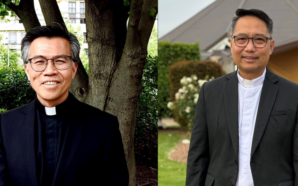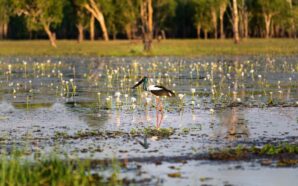During 2021 Reconciliation Week, Catholic Education Diocese of Parramatta produced an amazing Welcome to Country and Acknowledgement of Country video resource that can be used across our Diocese.
Shanaya from Catherine McAuley, Westmead, and Jumikah from CathWest Innovation College, give a Welcome to Country as traditional owners of the Darug nation.
Alkria, a student St Agnes Catholic High School, Rooty Hill, from the Goomori people, acknowledges the land on which she lives and attends school.
So what is the difference between an Acknowledgement and a Welcome to Country?
An ‘Acknowledgement of Country’ is a way that all people can show awareness and respect for Aboriginal and Torres Strait Islander culture and heritage and the ongoing relationship the Traditional Custodians have with their Country. Both First Australian and non-Indigenous people can perform ‘Acknowledgement of Country’. It is a demonstration of respect dedicated to the Traditional Custodians of the lands (or sea) where the event, meeting, school function or conference takes place. It can be formal or informal.
A ‘Welcome to Country’ is a ceremony where Traditional Custodians, Elders, welcome people to their land.
This is a significant recognition and is made through a formal process, although it is up to the Elder how they decide to carry out the ceremony. It is also dependent on the location of the event and the practice of the Aboriginal and Torres Strait Islander community – which can vary greatly according to region.
During a Welcome to Country, the Traditional Custodians welcome those in attendance, guests, staff and students to their Country. It might be just a simple speech or a performance of some sort, like a song, traditional dance, a didgeridoo piece or any combination of these.
Welcome to Country should always occur in the opening of the event in question, preferable as the first item. Note that a Welcome to Country is often considered a right and not a privilege.
Protocols for welcoming visitors to Country have been a part of Aboriginal and Torres Strait Islander culture for thousands of years (www.creativespirits.info).
The use of an Acknowledgement or Welcome to Country has become more commonplace since the creation of Reconciliation Action Plans (RAP’s), which places an Acknowledgement or Welcome to Country as an important step in the process of practical Reconciliation in this Country.
The National Aboriginal and Torres Strait Islander Catholic Council (NATSICC) is aware that some parishes already do it, some do it on special occasions and some do not do it at all.
A survey of parishes in Australia indicated a strong desire to pay respect and acknowledge those that walked upon and cared for the land for thousands of years and still continue to do so.
NATSICC would like to recommend that parishes consider the following forms of Acknowledgement:
- Acknowledge the Traditional Custodians of the Country on which the parish stands in a physical form (signage, plaque) on parish grounds.
- Provide an Acknowledgement to the Traditional Custodians in Mass booklets, websites and other media produced by the parish.
- An Acknowledgement or Welcome to Country regularly on the Liturgical Calendar or, at minimum, on significant days.
NATSICC is happy to assist you to implement any of the above recommendations.
Additionally, your local Aboriginal and Torres Strait Islander Catholic Ministries work very hard in the community and provide a great resource to parishes.
For suggestions on wording and more detailed information, please visit https://www.natsicc.org.au/acknowledgement-and-welcome-to-country.html
NAIDOC Week 2021 runs from 4 to 11 July.
With thanks to the National Aboriginal and Torres Strait Islander Catholic Council (NATSICC).







